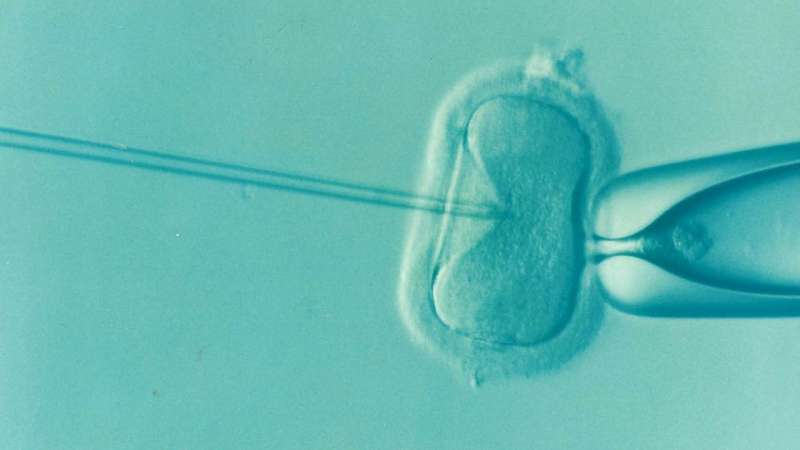This article has been reviewed according to Science X's editorial process and policies. Editors have highlighted the following attributes while ensuring the content's credibility:
fact-checked
peer-reviewed publication
trusted source
proofread
Time-lapse imaging for embryo selection in IVF does not improve the odds of live birth, large study finds

A randomized controlled trial looked at in-vitro fertilization (IVF) outcomes in the UK and Hong Kong. The results, published in The Lancet, provide much-needed evidence that using time-lapse imaging (TLI) does not improve treatment outcomes for someone undergoing fertility treatment.
Time-lapse imaging is a technique used in IVF that takes thousands of time-lapse images of embryos as they grow, creating a continuous view of each embryo as it develops. Some fertility practitioners offer TLI as a pre-implantation screening technique and believe that information that TLI provides—such as rate of development or the number and appearance of cells—can help to select the best embryos for implantation.
In TLI, the embryos are not removed from their incubators, thereby minimizing the fluctuations in temperature, humidity, pH, and gas concentrations that might affect development. Standard techniques to assess and select the embryos with the best implantation potential require the embryo to be removed from incubators.
The double-blind trial, led by Dr. Priya Bhide from the Women's Health Research Unit at Queen Mary University of London, recruited over 1,500 participants undergoing IVF at seven centers in the United Kingdom and Hong Kong.
The participants were randomly assigned to one of three trial arms: one group of participants received TLI-based embryo selection, one group received the standard static assessment using undisturbed culture, and the third received conventional assessment using light microscope and standard embryo culture in standard incubators. Baseline demographic and clinical characteristics of participants were similar in the three arms.
Live birth rates for embryos from each arm of the study were 33.7% in the TLI arm, 36.6% in the undisturbed culture arm and 33.0% in the control arm. The clinical pregnancy rates were 42.2% in the TLI arm, 43.4% in the undisturbed culture arm, and 40.9% in the control arm. None of the other secondary outcomes for clinical effectiveness and safety demonstrated significant differences between the arms.
Dr. Priya Bhide, Clinical Reader at the Women's Health Research Unit, Center for Public Health and Policy in the Wolfson Institute of Population Health, said, "Our trial suggests that TLI does not improve the odds of live birth in women having IVF and ICSI treatments. This shows that the theoretical benefits of advanced technology do not always translate into improved clinical outcomes. This is important information for all stakeholders; patients, health care professionals, funders and policymakers."
Dr. David Chan, lab director at the Prince of Wales Hospital, The Chinese University of Hong Kong, said, "Our trial provides evidence to support that TLI machines may not be essential equipment in the IVF lab, especially for IVF laboratories with limited resources. Laboratories may use the findings from this study to re-evaluate how they allocate their budget for equipment.
"Instead of investing heavily in the TLI machine, they could focus more on lab equipment that has a direct, measurable impact on live birth rates. This approach could help strike a better balance between the overall cost of IVF treatments and patient affordability in resource-limited settings."
One in six adults are affected by subfertility worldwide. Statistics from the Human Fertilization and Embryology Authority (HFEA) show over 100,000 IVF treatments took place in the UK during 2022–23.
More information: Clinical effectiveness and safety of time-lapse imaging systems for embryo incubation and selection in in-vitro fertilisation treatment (Time-lapse imaging trial, TILT) - a multicentre, three-arm, parallel-group, double-blind randomised controlled trial, The Lancet (2024). DOI: 10.1016/S0140-6736(24)00816-X
















